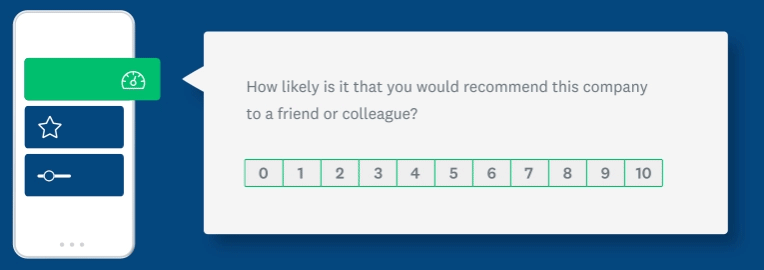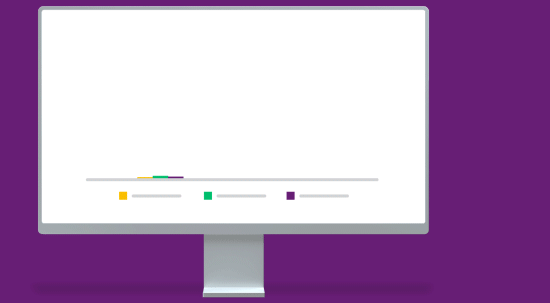How to create a team that drives exceptional CX for your growing business
As businesses grow, the work of gathering and sharing customer feedback to improve the customer experience (CX) needs to be a team initiative. Learn how small and midsize businesses drive CX today and how growing businesses can create a scalable customer feedback process that drives exceptional CX.
We’ve long said that teamwork gets a job done better and faster. And that is especially true for customer experience (CX) initiatives where cross-functional partnerships are important. Businesses can better deliver exceptional CX when they can gather, analyze, and share data across stakeholders and departments so that everyone is empowered to deliver the same high level of service, no matter who the customer is interacting with, or how.
In fact, in our survey of small and midsize businesses (SMB), 52% of small business owners and 90% of employees in midsize businesses agree that CX needs to be a team effort across different levels of an organization.
Small businesses
According to our survey, 53% of small business respondents from organizations with 5 employees or fewer said they work alone in understanding CX in their organization. But at best, only 33% of small business owners could spend only some of their time leading efforts to improve CX. That’s not surprising given respondents in small businesses likely need to wear many hats. Yet the majority of small business owners indicated that their company goals are heavily tied to CX.

If company goals are heavily CX-oriented, why aren’t small businesses measuring more of the customer experience? One reason might be the time-consuming nature of one-on-one customer interactions.
More than half (55%) of small business owners cited customer interviews as the top method they use for getting customer feedback, and of these, 58% also agree that CX needs to be a team effort. For example, a small professional services organization like a mortgage provider might share customer insights with everyone inside and outside the company who interacts with a client, from the loans officer to the escrow officer. That way, all stakeholders can better understand how clients feel throughout the entire mortgage process.
If the mortgage company has a lot of clients, the small owner would need to spend a lot of time conducting customer interviews, not to mention the effort associated with sharing insights. And it’s why—even though interviews are a highly valuable way to get feedback, they should be paired with a more scalable method to collect and share actionable customer insights fast. And that method is with surveys.

Midsize business
As businesses grow, the need for a scalable, team-oriented approach to CX becomes more acute. While the majority of small business owners work alone in understanding CX, the majority (79%) of employees in midsize organizations said there is a team dedicated to CX. Despite that, fewer employees in midsize organizations (60%) compared to smaller organizations (83%) said CX was either extremely or very well understood within their business. This highlights the importance of setting up automated, scalable processes to gather and share customer insights so everyone is empowered to understand and improve the customer experience.
For example, a midsize online retailer might be considering offering a new subscription box service and needs to gather and analyze customers’ shopping habits and preferences. A cross-functional team made up of marketing, engineering, and customer support could work together to create questions that would provide key insights for not only those teams, but also shared with others in the company too. That way, everyone in the company is empowered with actionable insights to build the best end-to-end customer experience for this new offering, based on what customers want.
Midsize businesses’ top 3 survey difficulties in understanding CX
- Asking the right questions
- Taking action based on the data
- Analyzing the data
In this report, we’ll dig into some of the key differences in how small and midsize businesses are measuring CX, the key challenges each are facing, and how best to build your CX team to get actionable insights that fuel exceptional experiences—whatever size your organization.
We’ll dig into the following 5 imperatives for SMBs to deliver great CX:
- Appoint a leader and build a dedicated CX team
- Create a scalable feedback process for your growing business
- Ask the right survey questions
- Analyze the data
- Take action from the data
01
Appoint a leader and build a CX team


Delivering great CX is a team sport. Our research found that 63% of respondents who say they’re involved in CX, work in places where there are 4 or more people with similar CX charters. The top 5 roles involved in CX are:
- Customer support, 46%
- Executives/company leadership, 45%
- Public relations, 45%
- Marketing, 42%
- Communications, 42%
- Operations, 38%
As with any sport, you need a leader—a team manager—to build and motivate a team, especially if you’re in a midsized organization with multiple functions managing different aspects of a customer’s journey.
It doesn’t matter if the leader sits within any of the functions mentioned by our survey respondents—or elsewhere—the key is they should empower teams to collect and share customer feedback cross-functionally. By doing so, the leader can better drive decisions with insights and empower colleagues and partners to take action. And ultimately better demonstrate the success of their CX efforts by proving the ROI.

Even if you're in an organization with 5 or fewer employees, or in a midsize business with 1,000+ employees, you are likely working with people who are focused on one or more functions, such as product development, marketing, sales, or customer support. Even if there are only a few people fulfilling these roles, everyone needs to understand how customers feel about the product, service, or your brand to make improvements. That’s why it’s helpful to create a cross-functional CX team to gather, analyze, and share feedback data.
02
Create a scalable feedback process for your growing business

Customer data, such as feedback data, needs to be quickly and efficiently collected and shared—securely and at scale—so that your cross-functional teams can gather actionable insights to drive critical business decisions.
Scaling your CX program may seem like a daunting task. Small businesses are likely to be in regular touch with their customers and so can more easily conduct individual customer interviews. But as business grows these interviews can prove time-consuming and may not give a full overview, especially if you can’t reach all your customers for personal interviews.
Surveys are an ideal method to get customer feedback at scale. In fact, 64% of small and midsize businesses surveyed said they use surveys to gather customer feedback, with midsize businesses more likely to use this method. The most likely reason for this is because surveys are more efficient than individual interviews to get feedback quickly and at scale.

You can make the process of creating and sending CX surveys more efficient and effective by using templates with ready-made, tried and tested CX questions to capture feedback about brand perception, brand loyalty, customer experience, customer satisfaction, and more. That leaves your team with more time to analyze the results that you can share broadly, as well as give you more time to carry out deep-dive interviews with key customers.
03
Ask the right survey questions

When you have the opportunity to survey your customers, you don’t want to waste their time with too many questions, but you do want to ask the right questions that will help you improve the experiences you deliver. It’s no surprise then that knowing the right questions to ask was the top challenge when using surveys to understand customer experiences for both small business owners and midsize organizations. To improve CX throughout the customer journey you need to ask the right questions at the right point in the journey to get accurate and timely insights.
What questions to ask will vary based on the goals and key performance indicators (KPIs) of your CX strategy. Where do you want to improve? What do you need to learn more about on your customer journey in order to improve those areas?


Make every question count. Be ruthless when it comes to deciding which questions you want to keep and which questions you let go, making sure that each one helps you drive action. Avoid asking leading and loaded questions; use simplicity and clear direction to guide your customers to give actionable feedback.
Check out our resource, The ultimate guide to running a customer feedback program, for help on designing customer feedback surveys as well as links to templates with recommended questions.
04
Set up your team for CX analysis


You’ve captured all the rich customer feedback data. Next comes analysis—which often is the most exciting part of the feedback process. What should you do with all this data? Where do you start? How do you make sense of the data to decide on the right action?
It may feel overwhelming but you’re not alone. Respondents in both small and midsize businesses said analyzing the data was the third biggest challenge when it comes to using surveys to understand how customers are feeling.
And don’t think you need to analyze alone—that’s what your team is there for, especially if you’ve created a cross-functional team. Analysis does not need to be intimidating. This key part of the process has become so much easier with survey analysis features that show you a summary view of your data and allow you to browse individual responses, create and export dynamic charts, and use filters to compare the results. You should also be able to view and categorize open-ended responses, and easily download your results in multiple formats.
Look for the "so what" in the insights. The data should empower you to prioritize the actions your organizations should take to improve CX.

While you can share insights with key functional partners, you may have partners who want to analyze the raw data themselves. Seek a CX survey team plan that lets you cost-effectively scale your CX team by inviting additional stakeholders to dive into the data and set up filters and cross tabs to compare results. Look for a survey solution that automates sentiment analysis by categorizing text responses to reveal the emotion behind what people are saying.
For analytics inspiration, check out our Q&A with our survey research scientist about how she approaches survey analysis.
05
Take action with the data

Your team has analyzed the data—now what? If you’re at a crossroads as to what actions to take first, don’t worry—respondents from midsize businesses agree as “taking action based on the data” was the second most-cited challenge of midsize organizations using surveys to gather customer feedback data.
Prioritize the list of actions that you have created based on the insights. Act on the low-hanging fruits immediately and share the insights and your recommended actions with the individuals or teams that can take the next steps. At the same time, prioritize the other action items based on the level of effort to improve that aspect of the customer journey, and share your findings with the affected teams.
Don’t feel that you need to solve your CX strategy in one fell swoop. Consider making small wins that when combined, add to a bigger picture. Consider thinking about action as one-to-one versus one-to-many. For example, stagger the questions you’ll ask depending on what your front-line service employees can help resolve. You can follow up manually 1:1 and then set up rules to automate next-step actions to help you scale your service. This will also free up some time for you and your colleagues to take action on feedback that would take more time and commitment to resolve.
When you take this approach, small wins can lead to bigger gains and the better equipped you’ll be at proving the ROI of your programs.

Infuse feedback and insights into every aspect of your organization by sharing data to empower individuals and cross-functional teams to take action. When you act on feedback you’ll become a more customer-centric organization that will build happier customers. Acting on your feedback analysis can change company culture by making it a more empathetic, customer-centric organization and in turn drive business results with systematic CX.
Learn how we at SurveyMonkey use employee feedback to shape our 5 company values that foster a customer-centric culture.
How SurveyMonkey team plans help you collaborate and take action on critical insights to deliver exceptional CX
SurveyMonkey team plans are a scalable and cost-effective way to collaborate on customer feedback so you get actionable insights to help you design delightfully engaging customer experiences. With a team plan, you can give everyone on your cross-functional CX team access to a market-leading platform to ask questions that power their CX initiatives.

With a team plan, you or anyone you designate as an Admin can give team members the ability to create, send, and analyze surveys and get to insights faster. And if you have additional stakeholders who want to just analyze results, you can add them to your plan in a cost-effective way to maximize the impact your company makes with the customer feedback data you collect.
Choose from our team plans
──────────────────────
Methodology: These SurveyMonkey Audience surveys were conducted online from Jan. 17-19, 2020 among a national sample of 898 small business owners ages 18 and older and a second sample of 360 fielding Jan. 29-30, 2020 of employees of companies based on firm size and industry. Respondents for this survey were selected from the over 2 million people who take surveys on the SurveyMonkey platform each day.
Conheça outros recursos

Modelos de pesquisa de satisfação de clientes
Com um modelo de pesquisa de satisfação do cliente, você pode coletar dados rapidamente, identificar pontos de queixa e melhorar a experiência.

Veja como a Ryanair coleta insights de clientes em larga escala
Saiba como a Ryanair usa a SurveyMonkey e a integração com o Microsoft Power BI para processar 500 mil respostas às suas pesquisas de CSAT todo mês.

Confira como a woom melhora a experiência de clientes e colaboradores
Descubra como a woom usa a SurveyMonkey para criar pesquisas multilíngue em escala, melhorar a experiência e obter insights de clientes.

Três tendências do ambiente de trabalho que mudarão as empresas de hoje
Novas pesquisas sobre as tendências do ambiente de trabalho e como os colaboradores estão equilibrando o tempo pessoal enquanto trabalham em casa e as diferenças entre trabalho remoto e presencial